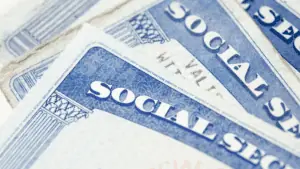Potentially forgiving student loans is a controversial topic these days. I’ve weighed in before on the current administration’s proposals and ideas. For example, one option on the table by President Joe Biden is to forgive a flat $10,000 in student loans per borrower, with limits on borrower’s income. And advocates for student loan borrowers continue to push the administration to go further, with higher amounts of student loan cancellation and no limits based on income.
One key concern, naturally, is that many hard-working Americans see the policy as unfair. For example, consider those who didn’t attend college – should they be required to subsidize the lives of those who did decide to go to college? Or what about those who took loans but worked diligently to repay them? Is this really fair?
Put the issue of fairness aside for a moment, is this really the best solution for all Americans? There are additional financial consequences to this proposal for the borrowers, too. This is especially an issue for those with larger loan balances. For example, I had this conversation with my neighbors recently, “Jack and Mary.” We ran into each other at Mary Ellen’s Bakery and decided to catch up over a wonderful breakfast. They mentioned that their son, Michael, was following the proposals closely. He’s a marine engineer in his mid-30’s and he still has student debt just under $60,000. The ideas floating around Washington could have a big impact on him.
You see, one largely ignored fact is the taxable impact to the borrower. Generally, whenever a debt (including a student loan) is reduced, waived, forgiven, or cancelled, the borrower may have to pay taxes on that cancelled balance. The lender would then send the borrower a 1099-C form during tax time, which would show the amount of loan cancellation. Depending what type of loan it is, the borrower may then have to report the cancelled debt on their tax return as “income,” leading to higher taxes paid. When large amounts of debt are cancelled, this can potentially result in significant tax liability for the borrower. For example, student loan forgiveness of $60,000 (like in Michael’s case) could result in a $18,000 to $24,000 tax bill, depending on the borrower’s federal tax bracket and other potential tax exemptions or deductions.
But what if there was a better way, a potential solution, to manage potential tax issues while ensuring more equity among borrowers and non-borrowers? What if instead of forgiving part or all of one’s student loan debt, we instead eliminate the interest on the debt? This just might be a more effective way to reduce the financial burden, according to experts.
The impact of 0% interest has been helpful to so many Americans amid the pandemic freeze on student loan repayments, which is scheduled to end on Aug. 31. With interest eliminated, borrowers saved $37.8 billion through the end of the last year. And in the first quarter of 2022, the total national student loan debt increased just 1.95%, the lowest rate in at least two decades, according to the Education Data Initiative₁.
The average federal student loan debt in the US is currently $37,113. With a 5% interest rate, that loan will cost you over $10,000 bucks in interest over ten years, according to Student Loan Hero’s calculator. However, many people take longer than that to pay back their loans, which then racks up more and more interest₂.
Student loan interest can be debilitating for borrowers. During periods of nonpayment (including some deferment periods, as well as forbearance and most grace periods), interest typically accrues. This leads many borrowers to wind up owing much more than what they originally borrowed by the time they begin repayment.
For student loan borrowers on an income-driven repayment plan, which allows them to repay their loans using a formula tied to their income, their normal monthly payment may not even be high enough to pay the interest due each month, which is then added to the loan balance – further extending the loan. For those with significant loan balances, having 0% interest might actually save them more money in the long run than $10,000 in forgiveness. Even for those with a smaller total, spending less money on interest would help them pay back their debt faster.
Loan interest, especially on larger balances, really traps borrowers into a situation they just can’t get themselves out of sometimes. Folks, I get it. But since the government holds the debt, removing the interest trap could be an equitable and easy solution for so many. Like Michael, we’ll be following these proposals and hope that smarter minds prevail. Yes, even in Washington!
So as always – be vigilant and stay alert, because you deserve more!
As we approach one of the greatest holiday’s celebrated by the best nation in the world, I would like to wish everyone a very happy and safe 4th of July.
Jeff Cutter, CPA/PFS offers investment advisory services through Cutter Financial Group, LLC, an SEC Registered Investment Advisor with offices in Falmouth, Duxbury, and Mansfield.
Jeff can be reached at jeff@cutterfinancialgroup.com. Insurance products, including annuities, are offered through Cutterinsure, Inc., (MA insurance license #2080572). Cutter Financial Group and Cutterinsure are affiliated and under common control but offer services separately. Members of Cutter Financial Group’s management receive revenue directly from Cutterinsure. Any compensation received is separate from and does not offset regular advisory fees. Cutter Financial Group does not charge advisory fees on any insurance products. We do not offer tax or legal advice. Always consult with qualified tax/legal professionals regarding your own situation. Investing in securities involves risk, including possible loss of principal. Insurance product guarantees are backed by the financial strength and claims-paying ability of the issuing company. This article is intended to provide general information. It is not intended to offer or deliver investment advice in any way. Market data and other cited or linked-to content in this article is based on generally available information and is believed to be reliable. Please contact us to request a free copy of Cutter Financials’ Form CRS, Form ADV 2A and applicable Form ADV 2Bs. 1. https://tinyurl.com/2p8vfx3s 2. Ibid








